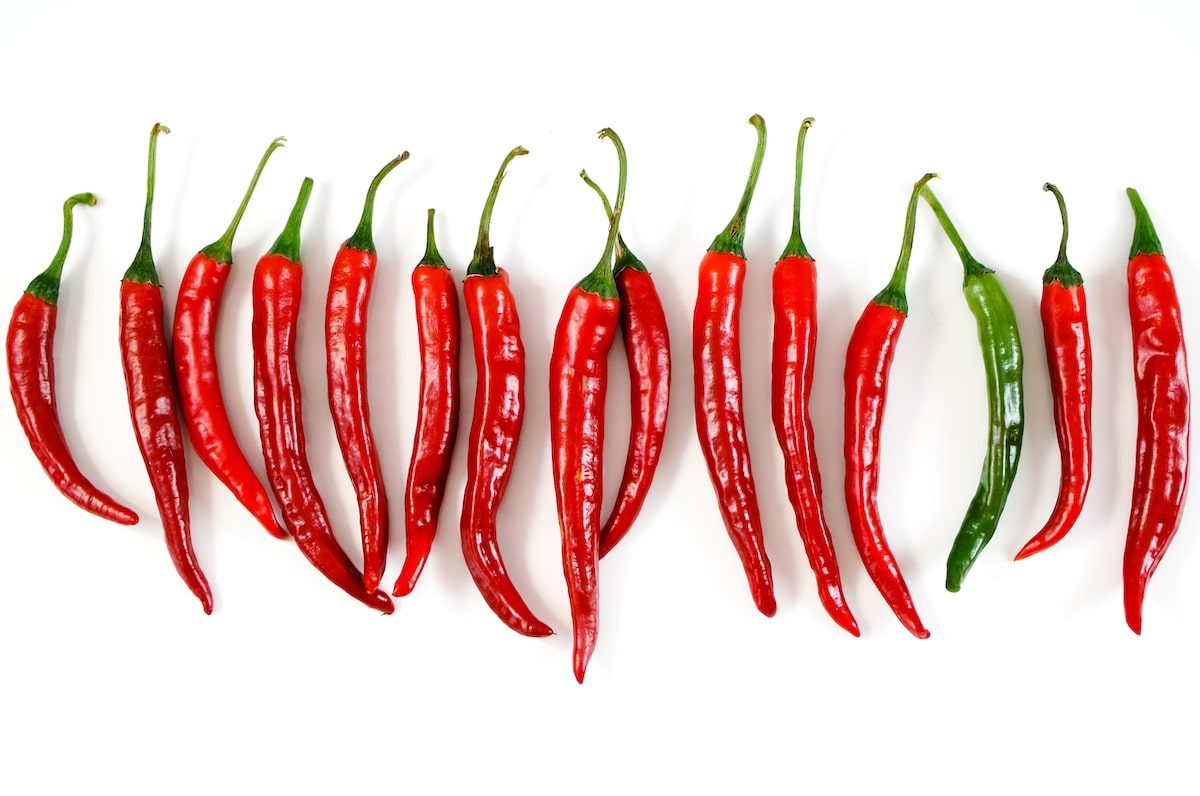If you are looking to spice things up in the garden, look no further than the humble cayenne pepper. The cayenne is part of the Capsicum annum family, which includes bell peppers, serrano peppers and jalapenos, so it’s a pretty hot family.
As for how and where they grow, These frost-tender perennials can be grown as annuals in temperate areas; however, they tend to grow best in warm regions that closely mimic the conditions of their native sub-tropical and tropical regions in South and Central America. They can be planted in mid-spring after any danger of frost has passed, and they usually take around 80-90 days to produce a ripe harvest.
This article looks to detail how to grow cayenne peppers and answer the most commonly asked questions about the cayenne growing process.
Table of Contents
Lets Get Planting
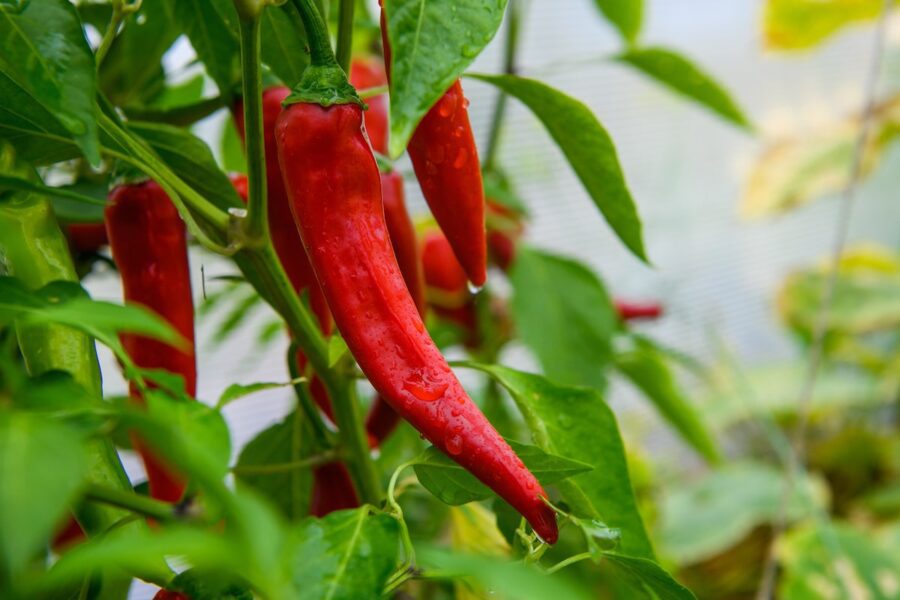
There are a few things that anyone looking to plant cayenne peppers should know. For one, the plants need to be spaced apart properly when seeded. Typically, 22-24 inches is a good distance between the plants so that they are not on top of each other when they start to grow. Secondly, be sure to plant the pepper seeds in an area where they will get sufficient and consistent sunlight throughout the day. This is because the conditions should be warm to replicate the climate in which they are native.
Furthermore, Over dry or moist soil will cause the leaves to be yellow and the fruit production to slow. Take care to water regularly but do not overwater. Sufficient drainage is paramount when it comes to cayenne pepper plants.
When it comes to planting the cayenne, you will want to start planting it indoors at around 60 degrees F. Using medium soil works well and be sure to leave it in an area where it will benefit from a lot of sun. You should notice the seeds sprouting after around 2-3 weeks. I recommend transplanting the seedlings around six weeks after the seeds have been sown 2-3 inches apart and the threat of frost is gone. Prepare your transplant’s final homes by amending the soil with organic materials and fertilizer, and make sure that the area you look to plant the peppers outside has a lot of sun coverage.
Taking care of your Cayenne Pepper plant
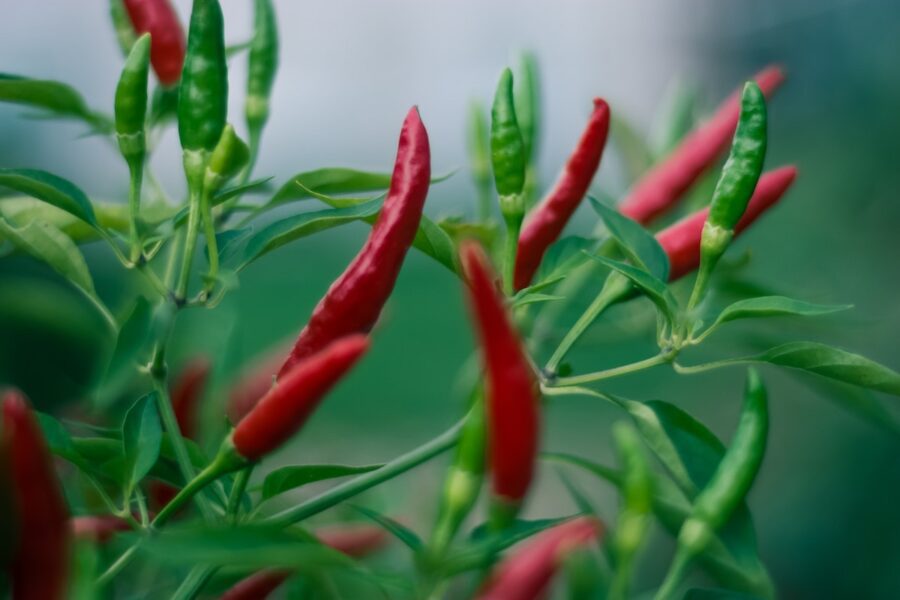
As with many plants, with the cayenne pepper plant, you will need to focus on a few key variables when caring for your peppers.
Fertilizer
You will want to grow your cayenne pepper plant in rich and fertile soil so that it can avail of nutrients. One tip that I will give is not to use a fertilizer high in nitrogen because the high nitrogen will work towards foliage growth as opposed to the growth of the peppers themselves.
Light and Soil
The cayenne pepper plant is a whole different beast when it comes to needing sunlight. It grows best in direct sunlight for long periods of the day. In terms of the soil, you should always keep it moist, mainly because it is exposed to sunlight for such a long duration. Look to keep the soil at a neutral pH level of 6.5-7 as well. If the soil is too acidic, it can make the pepper even spicier!
Water, Temperature, and Humidity
Seeing as the cayenne is native to more tropical climates, it will need warmer temperatures to flourish. The keyword there is warm; you don’t want the temperature to be too hot or too cold. This is why you tend not to sow seeds until after the last frost because the peppers will not take well to cold temperatures at all. Temperatures consistently below 55 degrees Fahrenheit will result in slow growth and leaf discolouration. Temperatures below 32 degrees Fahrenheit will damage or kill the plants, and night-time temperatures above 75 degrees Fahrenheit can impact pepper production levels.
When to harvest your peppers
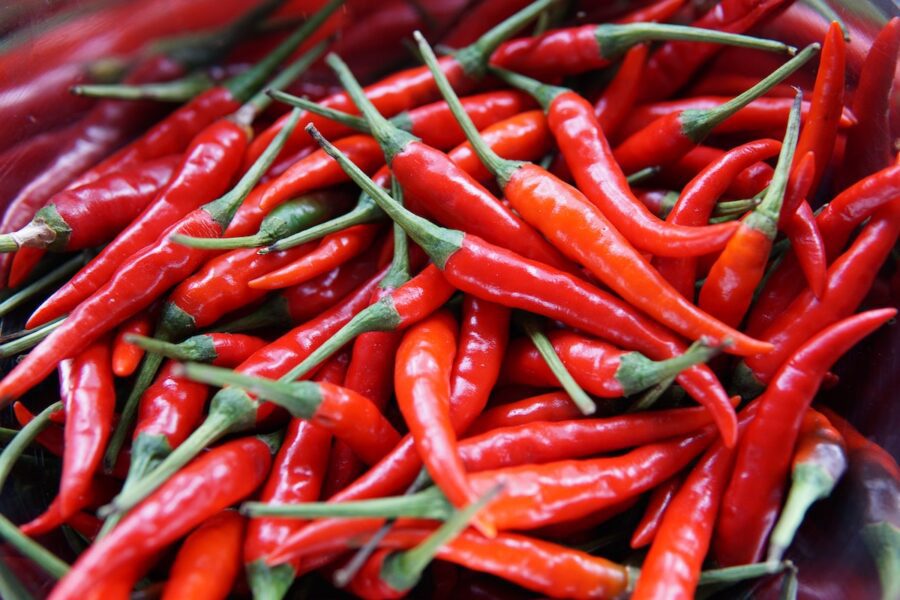
Typically, the peppers will be ready to harvest around 80-90 days after they have been sewn. This will depend on the conditions that they were subject to. Ripe cayenne pepper will have shiny red skin, and it will measure around 4-6 inches in length. They will also be firm to touch, which is a great way of telling you that your pepper is ready. If a pepper is soft, it is likely too ripe and not edible. Overripe cayenne pepper will start to turn green and will not have a nice flavour to it. Another tip is even though the peppers can be pulled from the stem, you should look to snip the peppers from the plant to help prevent any damage. This is important because, when well maintained, you can continue to harvest peppers until the first fall frost
After picking your harvested peppers, you can keep them in the fridge for 5-7 days. I would recommend using them within this time to enjoy the flavours of the fresh vegetable. You can also dry the peppers and ground them to use as a powder in a host of delicious dishes. Hundreds of recipes online will use the cayenne pepper to bring it to life, and with your fresh peppers, those dishes will taste even better!
FAQs
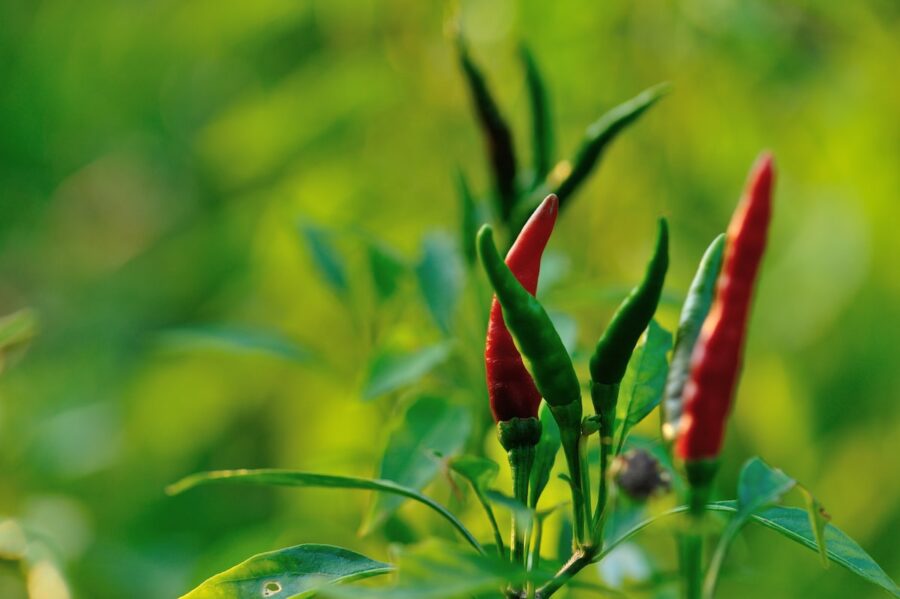
Ideally, if you live in an area with a warm summer and a lot of sun, you should plant the seeds around two weeks before the last frost. Depending on where you are, this date can range from March-April.
While many peppers themselves can grow to be around 4-7 inches in height, the plant itself can grow to be around 4 feet tall if exposed to the right conditions.
Chillies are grown as annuals in temperate areas, so when starting cayenne pepper plants from seed, it’s best to do so indoors or in a greenhouse. They are very delicate and react badly to overly hot or cold weather.
As opposed to many plants that will not react well to direct sunlight for long periods, the cayenne pepper will thrive in direct sunlight for eight or more hours per day.
With the cayenne pepper plant, you are looking for the soil to be moist but not soggy. Overwatering is a problem that some people can face when growing plants, and it is no different with the cayenne pepper. What I find is if you water the plant every 4-5 days at the base, then it responds well and will grow properly.
Cayenne peppers will be ready to harvest in about 70 to 80 days and about four to six inches long when mature. You can continue to harvest the peppers until the first frost of fall.

